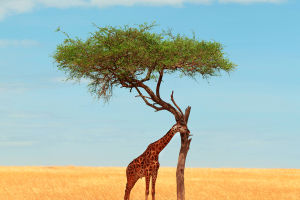Reindeer, scientifically known as Rangifer tarandus, are often depicted in holiday decorations and stories, but the reality of these remarkable creatures extends far beyond their festive associations.
Native to the Arctic and subarctic regions, reindeer are not only integral to the ecosystems they inhabit but also exhibit a variety of fascinating traits and behaviors that showcase their adaptability and intelligence.
This essay explores the extraordinary characteristics of reindeer, their cultural significance, and the challenges they face in a changing world.
One of the most astonishing aspects of reindeer is their remarkable adaptation to extreme environments. They possess a thick coat of fur that insulates them from the harsh Arctic climate.
This adaptation allows reindeer to withstand temperatures as low as -50 degrees Celsius (-58 degrees Fahrenheit). In summer, their fur changes to a lighter, thinner coat, enabling them to regulate body temperature in the milder climate.
Furthermore, reindeer have specialized hooves that help them navigate their snowy habitats. The hooves are broad and splayed, acting like snowshoes to prevent them from sinking into deep snow, while their sharp edges help them dig through the snow to find food.
Reindeer are also known for their incredible migratory patterns. Each year, they undertake one of the longest migrations of any terrestrial mammal, traveling up to 5,000 kilometers (about 3,100 miles) in search of food.
This migration is not only a survival strategy but also a remarkable display of social behavior. Reindeer travel in herds, often comprising hundreds or even thousands of individuals.
This collective movement serves to protect them from predators and ensures that they can find food in the harsh conditions of the tundra. Their migration routes are passed down through generations, illustrating a deep-rooted connection to the land and an instinctive understanding of seasonal changes.
Culturally, reindeer hold significant importance for many indigenous peoples, particularly in the Arctic regions. For the Sámi people of Scandinavia, reindeer herding is a way of life that has been practiced for centuries.
The animals are central to their culture, providing food, clothing, and materials for shelter. The relationship between the Sámi and reindeer is symbiotic; the Sámi practice sustainable herding methods that allow the reindeer population to thrive while maintaining their traditional way of life.
This cultural heritage highlights the deep connection between humans and reindeer, showcasing the importance of preserving both the species and the indigenous practices associated with them.
Despite their amazing adaptations and cultural significance, reindeer face numerous threats due to climate change and human activity. The warming climate is affecting their migratory patterns and access to food.
Melting ice and changing vegetation patterns can disrupt the delicate balance of their ecosystem. Additionally, increased industrial activity, such as mining and oil extraction, poses further risks to their habitats.
Conservation efforts are essential to ensure the survival of reindeer and their ecosystems.
Reindeer are far more than just symbols of holiday cheer; they are extraordinary animals with unique adaptations and a rich cultural heritage.
Their ability to thrive in some of the planet’s most extreme environments, coupled with their deep connections to indigenous cultures, underscores their importance in both nature and human history.
As we face the challenges of a changing climate, it is crucial to recognize the value of reindeer and work toward their conservation, ensuring that these incredible animals continue to roam the Arctic for generations to come.


